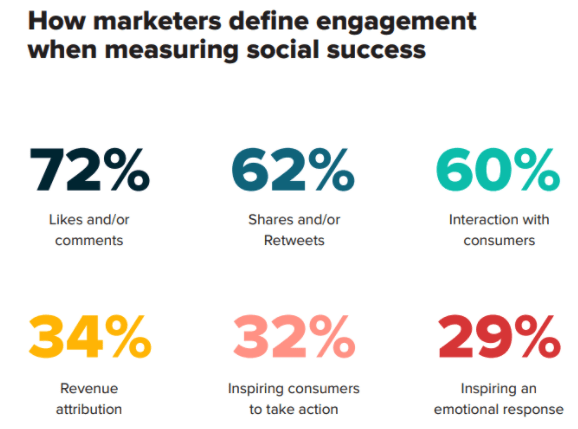Category: INF506 Social Networking for Information Professionals
On to the Future – Reflection on INF506 Module 6
This post, #7 of 8 will be a short post, given that the other posts are soooo long. (I can hear you cheering!)
What is the potential for the future of an organisation with which you are familiar?
I have learned a lot from this course, more than I thought and I’d say that it should be a required course, rather than an elective, as it definitely nutted out the finer details required for having a safer online presence both personally and professionally. While the ‘digital footprint’ was covered in ETL523 (Digital Citizenship), the how to’s and wheretofor’s where not as clear as they were in INF506 (Social Networking for Information Professionals). I can also see how I am now much better equipped to safely navigate social media and utilise it as a tool to improve the learning experiences of my students, build a community of practice with staff and improve connections with local and global societies.
What impact might the future have on us as information professionals?
Certainly, I now can clearly see the value of building social capital for my students, the school staff and the community and having social media and communication plans and policies in terms of saving the world from complete destruction and violence in such a way that I hadn’t seen it before.
It is my hope that the value of having a teacher librarian in schools will be increased, given the global need for information literacy in our society at present, not just digitally but in all social media.
Moreover, as an information professional, my immediate future entails a 2000 word assessment. Ciao!
This Just In – Reflecting on the 2021 American Insurrection
Well that escalated quickly
I’ve just finished reading Isoifidis & Nicoli (2019), Johnson (2018), Xu & Saxton (2018) and Rampersad & Althiyabi (2020) and let me tell you, I am shook!
Firstly, there’s this idea rolling around in my mind that:
- the cycle of becoming more open and more progressive as a society has
- spurned the creation of and an increase in our social media use and platforms which have been
- subverted by deliberate misinformation, ‘deep fake’ propaganda and advertising, scams and attempts to steal identities and fraud, which in turn has
- created or strengthened a ‘populist culture‘ who are disconnected from real-life human connections in their personal lives and who
- find connections in and devotedly follow misinformation groups like ‘QAnon‘ (or perhaps the ‘MAGA‘ supporters) and who then
- do wildly subversive things like commit domestic terrorist acts of violence and insurrection at the American capital and similar acts all over the world,
- followed by claims that the ‘Black Lives Matter’ or ‘Antifa‘ groups were responsible for actions from what were clearly ‘QAnon’ or ‘MAGA’ supporters. (And why am I using the word ‘supporters’ rather than ‘fanatics?’ I want to be impartial. Yet, we are not discussing sporting teams, but more the socially de-railed and disenfranchised).
In fact, just typing the misinformation groups into this post sends shivers up my spine and I am at a loss at how to help solve what has become a terrible global situation. The Iosifidis & Nicoli (2019) research was particularly prophetic, pointing out that social media platforms would not be able to do the culling of misinformation and violent / violence promoting groups or individuals and that governments will need to step in to legislate means to protect the majority from these sorts of acts of the minority. Yet, if governments step in, they will try to control the information to suit their own ends. They will try to propagate their own power and profit, we know enough about history to know this to be true.
It’s a sticky situation! And just like I was glad that I was taking Digital Citizenship during the COVID outbreak, so too am I glad that I am taking INF506 in the social media outbreak of 2021! I am definitely going to include discussions on building relationships offline, how to build information literacy skills and how to use social media in a healthy way into my library lessons in the future.
References
Iosifidis, P., & Nicoli, N. (2019). The battle to end fake news: A qualitative content analysis of Facebook announcements on how it combats disinformation. International Communication Gazette, 82(1), 60-81. doi: 10.1177/1748048519880729
Johnson, B. (2018). Archiving Al Qaeda- The role of libraries in protecting free speech and open systems. Computers in Libraries, 38(7), 22-25.
Rampersad, G., & Althiyabi, T. (2020). Fake news- Acceptance by demographics and culture on social media. Journal of Information Technology & Politics, 17(1), 1-11. doi: https-//doi.org/10.1080/19331681.2019.1686676
Xu, W., & Saxton, G. D. (2018). Does stakeholder engagement pay off on social media? A social capital perspective. Nonprofit and Voluntary Sector Quarterly, 48(1), 28-49. doi:10.1177/0899764018791267
The Role of Social Media Policies – Reflection on INF506 Module 5

OLJ Task 12: Social media strategy / Policy development
There are indisputable benefits of social media (bringing communities and organisations closer together, creating more opportunities for engagement). Having previously discussed how it is no longer a question of if we should embrace social media, but how, when deciding to take the plunge into social media as an organisation, research from Di Gangi, Johnston, Worrell & Thompson (2018) points out that we must consider hiring practices and internal and external risks from all stakeholders perspectives – mitigating any possible negative circumstances.
In particular, Di Gangi, et al. (2018) recommend organisations consider writing social media policies to prepare for ALL internal and external legal, social and technical risks, such as:
- Legal: Classified/confidential/private information sharing; and Inappropriate/unethical/illegal content use; ;
- Social: Misrepresentation of the organisation’s views, values or mission by individuals which diminishes the organisation’s reputation both internally and/or externally; Misinformation or errors in content by users or staff (including ‘fake news‘ aka propaganda, deception, manipulation, fabrication, news satire and news parody used to spread mis-information with potential to cause social, corporate and political unrest and instability (Rampersad & Althiyabi, 2020)); [This makes me think of how, when books first started being published, humans believed them to be the absolute truth – simply because of the belief that if it were written down than it must be true. Similarly, the evolution of news radio and then televisions had similar effects, humans believed everything they saw on television as true (and in some cases, advertising to
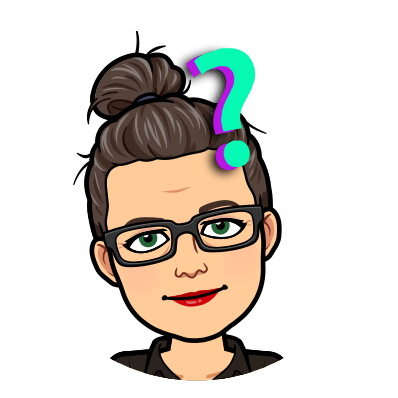 children has had considerable back lash and regulation because their brains are not fully developed enough to determine fact from fiction). Is the evolution of fake news and the need to determine the validity of information on social media – eg. the determination between fake news and real news, any different then than the ability say, to determine war propaganda as false? Just because the means – social media vs newspapers for example – has changed, should the consequences for negative behaviours not be the same?… Food for thought.]
children has had considerable back lash and regulation because their brains are not fully developed enough to determine fact from fiction). Is the evolution of fake news and the need to determine the validity of information on social media – eg. the determination between fake news and real news, any different then than the ability say, to determine war propaganda as false? Just because the means – social media vs newspapers for example – has changed, should the consequences for negative behaviours not be the same?… Food for thought.] - Detrimental distortions of market perceptions by providing a coordinating platform or disproportionate voice/visibility to minority opinions with questionable basis in fact; Misperception that the organisation is not adept at social media platforms or that what is offered is less than what is available face-to-face; Accidental or unauthorised third party searches or sharing of information or resources over an unlimited period of time (possibly for economic gain or with intent to cause harm) that is beyond the organisation’s control; Reduced staff efficiency or increased distraction;
- Technical: Third party unauthorised use of the platform account(s) to cause harm; Increased server/band-with/technology resource requirements; Temporary outages or updates required; Malware (malicious software)/false profiles/false posts/false content uploads that cause damage to the organisation, staff or resources.
LOVE THIS VIDEO! I’ve shared it with everyone I know on Facebook:
Communication Plan
Bunker (2017) discusses the purposes of choosing a social media platform and directs us to the American Library Association (ALA) for their recommendations on creating a communication plan. Bunker (2017) also recommends that organisations prepare for a successful leap into social media platforms by frequently reviewing, surveying and knowing our context and patrons’ information needs, knowing what communication methods they prefer, aiming to match and connect the face-to-face attitude and environment with the online environment and to not be afraid to take some risks – trialling several platforms to find what works best. Bunker (2017) also suggests we clearly determine our goals for pursuing social media platforms (eg. increased awareness of our values, connections and partnerships with community, increased traffic and outreach in our library and online, strengthened loyalty and trust, real-time news and update delivery, awareness of our resources and programs, modelling digital citizenship, teaching and demonstrating information literacy or research skills, and building links to other media networks.
Moreover, the research by Humphries (2019), supported by King (2015), states that if we decide to partake in organisational social media, we must be prepared to not only plan strategically but also we must monitor engagement if we want to reach social media optimisation.
King (2015) even goes so far as to say that we must have a pre-emptive understanding of social media analytics to help set and reach goals for growth, engagement, interactions, visits, or even larger goals like building connections or partnerships, improving information literacy, or other strategic plan goals. And I just realised that I’ve been running a Facebook (FB) teachers group (Teachers Who Know Me) with about 160 members for 5 years and I did not know about the ‘Insight’ section as the group admin. I immediately had a look and my analytics are pretty woeful, (basically, no interaction from my teacher friends who all seem to use FB socially rather than professionally) but the graphs and information available are pretty amazing. (They’ve also just updated the tagging system to include hashtags so that is helpful and I can find something I’ve posted much easier now).
 In looking at the different analytics discussed in King (2015) I am curious about how fast these platforms are changing. Google+ was replaced with GoogleCurrents (neither faring very well) and Flickr is just not on my radar for images as I prefer to get them from Creative Commons (CC). Which leads me to the question, do CC provide analytics for those uploading images? I looked at their site and they do collect ‘Cookies’ for CC use but what about those who are uploading? Perhaps it is something they might consider?
In looking at the different analytics discussed in King (2015) I am curious about how fast these platforms are changing. Google+ was replaced with GoogleCurrents (neither faring very well) and Flickr is just not on my radar for images as I prefer to get them from Creative Commons (CC). Which leads me to the question, do CC provide analytics for those uploading images? I looked at their site and they do collect ‘Cookies’ for CC use but what about those who are uploading? Perhaps it is something they might consider?
Content creation
Bunker (2017), supported by Peacemaker, Robinson & Hurst (2016), and Xu & Saxton (2018) recommend we attempt to improve the social media algorithms and increase our target audience’s ‘social capital‘ by linking our content to popular topics, utilising # (hashtags), hyperlinks, images, videos, global and local network links (a variety of diverse ‘community ques’), gradually increasing our viewer rates over time.
Bunker (2017) also provides a framework for creation of content that links to the organisation’s mission, vision, values or strategic plan – recommending a few strategies, but having read her lists, I’ve created my own template for this social media (strategy) plan which I will include in my final assessment.
It also occurs to me that an organisation would need to have a central location for all of the social media account information, given the constant flux of staff in most education settings. Thus, I’ve created another page on my GoogleSheet (also to be included in the final assessment).
Trouble shooting: See NSW Department of Education. (2018). Social media implementation procedures.
References
Bunker, L. (2017). Picking a platform and finding a voice. In S. W. H. Young & D. Rossmann (Eds.), Using Social Media to Build Library Communities : A LITA Guide. Blue Ridge Summit, UNITED STATES: Rowman & Littlefield Publishers.
Di Gangi, P. M., Johnston, A. C., Worrell, J. L., & Thompson, S. C. (2018). What could possibly go wrong? A multi-panel Delphi study of organizational social media risk. Information Systems Frontiers, 20(5), 1097-1116. doi: 10.1007/s10796-016-9714-2
Humphreys, S. (2019). Tweeting into the void?: Creating a UK library twitter list and analyzing best practice – successes and myths. Insights, 32, 1-23.
Peacemaker, B., Robinson, S., & Hurst, E. J. (2016). Connecting best practices in public relations to social media strategies for academic libraries. College & Undergraduate Libraries, 23(1), 101-108. doi: 10.1080/10691316.2016.1134244
Rampersad, G., & Althiyabi, T. (2020). Fake news: Acceptance by demographics and culture on social media. Journal of Information Technology & Politics, 17(1), 1-11. https://doi.org/10.1080/19331681.2019.1686676
Xu, W., & Saxton, G. D. (2018). Does stakeholder engagement pay off on social media? A social capital perspective. Nonprofit and Voluntary Sector Quarterly, 48(1), 28-49. doi:10.1177/0899764018791267
Social Media in ‘Your’ Organisation – Reflection on INF506 Module 4 and Assessment 1
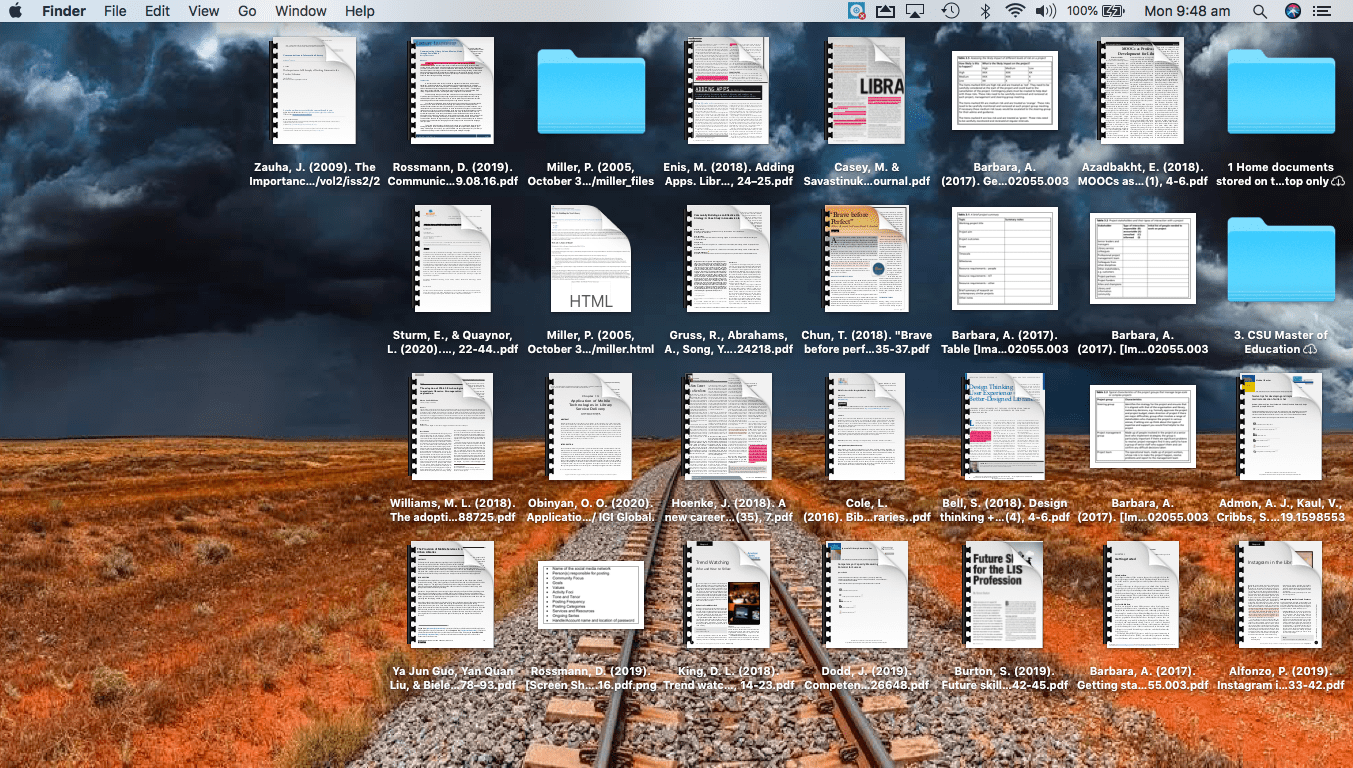
OLJTask 10: Defining librarian 2.0
I don’t have an ‘organisation’…but I have the goods!
While I did read the module, I simply did not have time to read everything thoroughly and then complete this post before I submitted my first assessment. Thus, this reflection is written in support of that assessment and how I could have improved it having now read the module in detail. (As I write, I have received my assessment back and I have passed so that is a relief!)
I am not currently working in a library so that aspect of my reflection below will be based on my past experiences. It is also the reason a lot of my approaches seem too broad – I haven’t yet accomplished the level of practical experience required to narrow the roles and responsibilities of TLs down to the nitty gritty. That said, however, I recently attempted a job interview as a librarian in a local public library and they asked what I bring to the role. I floundered a little, but I said something like, I am focused on the library users, I have a positive attitude and I am flexible – very similar to the ‘customer service focus, strategic viewpoint and ability to be adaptable and resilient’ presented by Burton (2019, p.44).
So too do I have an open approach to programs that I will attempt and a modern take on what it means to be a teacher librarian in the 21st century. Chun (2018) lists some great attributes of TLs, which I believe I possess: user-driven focus – particularly for students, passionate, collaborative, innovative, risk-takers, leaders, evaluative – readily seeking and accepting feedback for growth, ever increasing their knowledge scope, and a consistent willingness to try new things. King (2018) adds ‘trend watcher’ to this list (in terms of the digital age) which I believe is most easily monitored via social media and applications like Diigo (mentioned in my assessment).
Did you thoroughly discuss web 2.0 or library 2.0?
I think the design process recommended by Bell (2018) is simple but beautiful: what’s the need, why is it a need, how can we fulfil the need? Change is necessary and the simpler the approach, the better.
In particular, the in assessment 1, I did not cover enough (or anything?) about the importance of having a change to web 2.0 minimum approach to social media in an organisation. Miller (2005) was writing about it 15 years ago, ergo, it isn’t new, by any stretch in technology terms, much less the term ‘library 2.0’, reimagining the library in a user-centred model for 21st century library services (Casey & Savistinuk, 2006). Here are three quotes that struck me particularly:
“The heart of Library 2.0 is user-centered change. It is a model for library service that encourages constant and purposeful change, inviting user participation in the creation of both the physical and the virtual services they want, supported by consistently evaluating services. It also attempts to reach new users and better serve current ones through improved customer-driven offerings” (Casey & Savistinuk, 2010, p.40).
“If we are not responding to the experiences our members are receiving in other cultural, learning, and retail industries, then we risk being irrelevant for our communities’ immediate and future needs” (Jane Cowell in Hoenke, 2018, p.7).
“What makes a service Library 2.0? Any service, physical or virtual that successfully reaches users, is evaluated frequently, and makes use of customer input is a Library 2.0 service” (Casey & Savistinuk, 2010, p. 42).
 (Note: This user-centred or user-focussed approach has been mentioned in my blog previously and also in my second assessment on the positives and negatives for library resource genrefication, written for ETL505 Describing and Analysing Educational Resources).
(Note: This user-centred or user-focussed approach has been mentioned in my blog previously and also in my second assessment on the positives and negatives for library resource genrefication, written for ETL505 Describing and Analysing Educational Resources).
Yet, despite social media’s ‘coming of age,’ I have encountered quite a bit of resistance to interactive social media in the workplace. One principal (no longer in the same role) explicitly forbade it on school grounds. Indeed, teachers were not allowed to even have their phones out at school at any time and she was very clear that we would be terminated if we were caught. The lady who ran the canteen (a seasoned local, much respected) had a Facebook (FB) page for the school canteen and kitchen garden at the school. One year, I added photos to her FB page that I’d taken while teaching in the school kitchen garden (in my role as the kitchen garden teacher, being careful to only upload those images without people in them) and one of the principal’s friends (the librarian no less, also no longer at the school) ‘reported’ it.
I remember had to sit in the principal’s office and show her what I had uploaded and who was running the FB page, proving it wasn’t myself and that I had not dared to cross her (as if I would!). It was a ridiculous situation that was only helped that the images were (and still are) lovely representations and promoted what was one of the most important programs at the school. To this day, the school and surrounding schools in the town have a very reserved approach to social media which I find ‘safe’ but at the same time quite sad.
After reading Casey & Savistinuk (2010) libraries or schools who prohibit social media (or worse, get rid of the library all together, such as a local high school recently did in my area, refusing to reimagine the space as a Library 2.0) have lost the opportunity to ‘harness collective intelligence’ of the community and limited their ability to ‘tap into users via the long tail’ – i.e. they simply provide the same services to the same groups, fearing and avoiding change, without considering that they could allow users to anonymously comment or offer feedback on the collection or services and grow.
Did you mention privilege?
School administrators who refuse to partake in social media, omit a ‘tech savvy’ portion of society (Williams, 2018) who use social media as their primary method of communicating with the library or school – generally speaking, those who simply find it easier to use (not to mention those who are from lower socio-economic status (SES) who are traumatised or marginalised, or who have limited access to academia or literacy levels). This is supported by Admon, Kaul, Cribbs, Guzman, Jimenez, & Richards (2020, p.500) who point out that social media creates “an open forum by disrupting the boundaries of geography, position, institution, and hierarchy.” (And, although I’m not sure that I’m ready to run a ‘Twitter chat’ session for an organisation myself, as recommended by Admon et al. (2020), I appreciate their recommendations and will refer to them should a Twitter chat be warranted in future).
Certainly, having lived in Broken Hill for 6 years, I can attest that Facebook (linked to Instagram) was the primary source of advertising used by local businesses and community services – simply for the fact that everyone was on it and it was basically free (omitting the cost of the technology and internet).
 Perhaps it is well and truly time for librarians and school administrators to consider our perceptions of privilege in our user-centred approaches to the library and in our communications with society. ie. Are we avoiding social media because we want to push our academic forms of communication onto a society who will only suffer from our position of power over information?
Perhaps it is well and truly time for librarians and school administrators to consider our perceptions of privilege in our user-centred approaches to the library and in our communications with society. ie. Are we avoiding social media because we want to push our academic forms of communication onto a society who will only suffer from our position of power over information?
Did you consider access in terms of ability?
Enis (2018) points out that we cannot just have the latest most whiz-bang applications and software but we also require facilitators (e.g. teacher librarians) to help our patrons utilise and access them as required. Furthermore, something else I note about my assessment was that my proof reader had recently completed an access related course where she said that I needed to change how I mentioned the image in my assessment so that I described it for those who might be colourblind. This links to the TEDtalk mentioned in Module 4: ‘If we consider our library a user-focused library, we need to tailor access for everyone, including those who rely on social media for connections to the library or school.’
Did you point out not just ‘doing’ social media but doing it well?
While I particularly covered aligning the social media recommendations with the broader school plan. I like the ideas from Rathore (2017), as well as those from Rossmann (2019) to align the social media project with the ‘broader communication plan‘ and am curious how many school libraries and schools in general actually have a communication plan…?
I did mention doing social media ‘well’ in my assessment, but I don’t feel I supported my comments aptly, having not mentioned Rossmann’s (2019) article which goes into ‘social media optimisation’ in depth. In addition, the argument for not just ‘doing’ Library 2.0, but doing it well is made very clear in the below TED talk:
Did you mention networking between librarians?
Another item that I did not mention in my assessment are the networking links between schools (lead by the teacher librarians). Just as the networking that prohibited social media in my previous setting, so too could networking help support tentative schools in taking the plunge into library 2.0 concepts and web 2.0 social media connections (and even web 3.0 interactive applications), as recommended in Cole (2016, p.9) challenging the library’s role as a “fixed community asset…(making its scope) unfettered by static definitions.” (What was obviously lacking in that scenario was simply leadership).
Did you discuss project management and the various means of evaluation?
I did touch on project management / change leadership in terms of the timeline and involvement of a digital learning environment leadership team in my project proposal assessment. However, I would have liked to have more formally included the ideas recommended by Allen (2017) also, including: identifying and researching user needs, identifying and researching the project’s aim(s) based on the context’s vision/mission/strategic plan and the potential impact of the project on those needs, having clear measures for success – while still accepting a margin of trial and error, consideration for the context and norms within it, discussing the types of stakeholders/project groups and the required levels of communication/input, assessing the risks, and providing a basis for future professional development and growth of the context. Furthermore, of particular interest, is the project management table by Allen (2017, p.54) that I could have used (among other great tables by Allen). I also liked the ideas from Bell (2018) which recommends the Design Thinking Toolkit for Libraries (with free downloadable toolkit) and the ‘Its Broken’ video by Seth Godin.
When it comes to the evaluation stage of the project, again, I don’t think I fully discussed the scope required for evaluation of the recommendations in my assessment. All services, new and old, require a schedule and means for evaluation across the whole context and beyond – current staff, users, community members and those we are trying to gain via outreach (Casey & Savastinuk, 2010).
References
Admon, A. J., Kaul, V., Cribbs, S. K., Guzman, E., Jimenez, O., & Richards, J. B. (2020). Twelve tips for developing and implementing a medical education Twitter chat. Medical Teacher, 42(5), 500-506. https://doi.org/10.1080/0142159X.2019.159855
Allen, B. (2017). Getting started. In The No-nonsense Guide to Project Management (pp. 49-70). Facet. doi:10.29085/9781783302055.003
Bell, S. (2018). Design thinking + user experience = better-designed libraries. Information Outlook (Online), 22(4), 4-6.
Burton, S. (2019). Future skills for the LIS profession. Online Searcher, 43(2), 42-45.
Casey, M. & Savastinuk, L. (2010, May 21). Library 2.0: Service for the next-generation library. Library Journal.
Chun, T. (2018). “Brave before perfect”- A new approach for future-ready librarians. Teacher Librarian, 45(5), 35-37.
Cole, L. (2016). BiblioTech as the Re-Imagined Public Library: Where Will it Find You? Paper presented at: IFLA WLIC 2016 – Columbus, OH – Connections. Collaboration. Community in Session 213 – Metropolitan Libraries.
Enis, M. (2018). Adding Apps. Library Journal, 143(6), 24–25
Hoenke, J. (2018). A new career in a new town. Information Today Inc. 35(7).
King, D. L. (2018). Trend watching: Who and how to follow. Library Technology Reports, 54(2), 14-23.
Miller, P. (2005, October 30). Web 2.0: Building the new library. Ariadne, 45. http://www.ariadne.ac.uk/issue45/miller
Rathore, S. (2017, August 22). 7 Key steps in creating an effective social media marketing strategy. [Blog post]. https://www.socialmediatoday.com/social-business/7-key-steps-creating-effective-social-media-marketing-strategy
Rossmann, D. (2019). Communicating library values, mission, vision, and strategic plans through social media. Library Leadership & Management, 33(3), 1-9. doi:10.15788/2019.08.16
Williams, M. L. (2018). The adoption of Web 2.0 technologies in academic libraries: A comparative exploration. Journal of Librarianship and Information Science. https://doi.org/10.1177/0961000618788725
Social media tools and platforms – Reflection on INF506 Module 3

OLJ Task: Social news sites – My Musings
Recent events have caused a major cultural shift in how we view ‘news’ and the media responsible for ‘reporting’ the ‘news.’ Yet, it is not actually all that recent. I myself (born in the 1970’s) can remember turning off the television or radio when the news came on, because it was just a report of everything that went bad in the world on that day, not to mention the fact that the glossiness and gleaming smiles of the presenters did not match my reality and provided me no social capital. My sister in law prefers Instagram to Facebook for exactly that reason: she finds Facebook brings her down, where Instagram less so. Many of my colleagues refuse to engage in a professional Facebook page because they claim ‘we don’t use it for that.’ This concept of being lost in the quagmire of negative ‘news’ (or the ‘negativity bias’ of humans) is not new as seen in publications such as this BBC news article (Stafford, 2014).
In any discussion around society (online or otherwise) it is important to recognise that human societal narratives are a result of their environment, not the cause. While face-to-face interactions have had a series of ‘rules’ and guidelines for civility, online interactions by comparison are merely at their infancy stage and so too are the devices which regulate them.
When looking at the following online news media sites: reddit, Digg, Newsvine, Hacker News, and Nuzzel I look hesitantly. I suppose I am old school? I like my news to be newsworthy? I dislike having to sift through advertising (often made to look like news) – its exhausting! Reddit pages that I follow or that they’ve selected for me based on what I’ve put in as my ‘interests’ tell me ‘lurkers are welcome.’ Digg has a better layout, more professional…Newsvine is run by NBC which I know to be a local network out to make a profit. HackerNews – no thanks, hacking is illegal and I don’t want to be a party to it even remotely. Apparently ‘top influencers’ use Nuzzel…is this what we’ve come to? Aspiring to be a ‘top influencer?’
UPDATE: For more academic reflections on social news media, please see my (extra) blog post: This Just In – Reflecting on the 2021 American Insurrection.
Social media tools and platforms – Reflection on INF506 Module 3
First of all, how cool is the website “Internet Live Stats?” My mind boggles at the amount of background work required to obtain this information and I wonder at its reliability…? But, it certainly offers a clear view at how daunting it would be to keep up with all of those platforms in a small company!
- Continuing on from my previous blog post, individual contexts (eg. schools) need to identify the platforms, websites, blogs and social media that would best engage their users or prospective users and develop a digital (learning) environment (DLE) framework. To paraphrase Stoddart, Chan & Liu (2016, p.143):
“(While) an excellently considered and employed facilitation framework in no way guarantees a successful outcome… a non-existent framework or poorly facilitated project will certainly limit the chances of a successful project.”
2. In order to determine which platforms to use or how to use them in your context, consider the most populated social media platforms, who is using them (eg. according to Komljenovic (2018) more high-income earners might use LinkedIn, XING, ResearchGate or Academia.edu) and how often they are using them. As of October, 2020, Statista have identified the following social media platforms as the most popular, based on ‘active users’:

3. While digital environments have the capacity to improve our lives, we need to plan for maintaining a safe, professional and healthy work-life balance on social media and online overall. Specifically, in terms of social media, we need to be mindful of possible negative impacts for ourselves as professionals as well as for our users, particularly with regards to physical health, mental health, life satisfaction and body mass index (Shakya & Christakis, 2017). Shakya & Christakis (2017) recommend we plan how we will attempt to exponentially increase face-to-face interactions in order to counteract the negative impact of online interactions, and to maintain a policy of quality social media interaction rather than quantity of social media interaction.  (NOTE: I have also discussed in previous blog posts how, as teacher librarians, we need to work to assist our colleagues and students to manage the information overload issues of ‘filter failure’ and ‘filter bubble.’)
(NOTE: I have also discussed in previous blog posts how, as teacher librarians, we need to work to assist our colleagues and students to manage the information overload issues of ‘filter failure’ and ‘filter bubble.’)
4. I like the idea of using a ‘web log’ a.k.a. blog or wiki (using something like GoogleSites) as a library hub, helping teachers and students with information literacy and other relevant topics, as discussed by Maxwell (2019), and would seek to include this in the website of my future school / library context(s). I could also then share my blog posts or other library information via social media. Alfonzo (2019, p.33) suggests that libraries could use social media for communication and knowledge sharing, particularly reaching members of the community who might not know about the information sources otherwise.
5. I also feel that student blogging is a great idea, having done it for myself for two years as part of this degree, I am so glad, looking back that I’ve maintained my learning and have a way of reminding myself or others about key information science issues and learning. Maxwell (2019) suggests that student blogging, when monitored and done safely and effectively, can improve student literacy skills, global connections, sharing perspectives and links for families to view their children’s progress. I also like the idea of student wikis using GoogleSites, suggested as offering better understanding of the writing process for students (Stoddart, Chan & Liu, 2016).
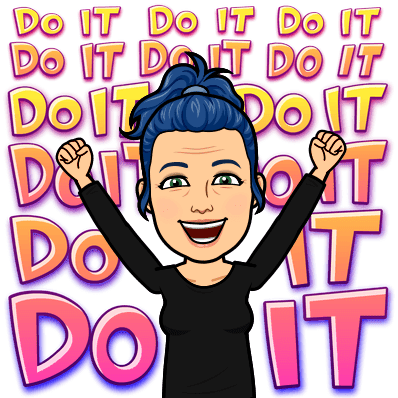
[I also like the idea of having a staff wiki. Currently, staff communicate via Sentral but have their own teaching programs and classroom strategies. These would be much better coordinated by a wiki or maybe GoogleSites?]
6. Promoting and advocating the library blog (&/or wiki) and the library on the context’s selected social media and intra-net platforms (i.e. using ‘micro blogs‘ / tweets) is a whole new concept for me. [Personally, I dislike Twitter, and indeed, the whole concept of word limits – if I’m honest! 280 characters or less? No thanks! I prefer the motto ‘why use 1 word when 20 will do!’] However, I like the idea of Mentionapp as an analytic tool for hashtags (although I had to set up a professional twitter account to use it and that turned out to be a bit of a hassle). I can also see the benefit of having live updates via a Twitter feed in times of hardship, such as the COVID-19 pandemic, as proven by Alajmi & Albudaiwi (2020). I am just not sure if I want to be the one responsible for it… Alfonzo (2019, p.35) recommends these things to ensure ‘search engine optimisation’ (SEO) and that is to use a business profile, use the same @handle across all accounts and link the accounts wherever possible (eg. Instagram links to Facebook), have an engaging profile picture (and for situations where teachers don’t want to use their own pictures they can use a Bitmoji), using the whole library name (in my case, ‘Teachers Who Know Me’ as I don’t work in a library yet) as the account names, @symbols and #hashtags, having a library mission statement and contact details in the description or bio, add categories and story highlights wherever the application allows, and use the free analytics some social media networks offer.
7. Roadblocks and concerns abound! Not only am I concerned about the physical, financial and well-being cyber safety of young or naive social media users, I am also concerned about which members of the community social media does NOT reach or whose views are being privileged (based on the user demographics). I have concerns as well about the increased workload (and budgetary expense) of maintaining a digital learning environment – including social media platforms. Furthermore, the fears and issues around change leadership that may arise when introducing innovation in a workplace (which may or may not have a community of practice work culture). I myself am reluctant to use Twitter with any level of skill or benefit to the context and I consider myself fairly tech savvy (so, I can only imagine how someone less tech savvy might feel at being forced to use these platforms) and training and development will surely be required if the platforms are to be of any success… Thus, I read Vanscoy, Hicks & Cavanagh (2018) with the hopes that they would offer some insight into how to manage these roadblocks.
References
(2019). Linkedin, platforming labour, and the new employability mandate for universities. Globalisation, Societies and Education. 17:1, 28-43. doi: 10.1080/14767724.2018.1500275
Maxwell, L. (2019). A librarian’s journey in blogging. Library Technology Reports, 55(5), 21-24.
Shakya, H.B., Christakis, N.A. (2017). Association of Facebook use with compromised well-being: a longitudinal study. American Journal of Epidemiology. 185(3). 203–211. doi: https://doi-org.ezproxy.csu.edu.au/10.1093/aje/kww189
Statista (2020). Global social networks ranked by number of users 2020. https://www.statista.com/statistics/272014/global-social-networks-ranked-by-number-of-users/
(2016). Enhancing successful outcomes of wiki-based collaborative writing: a state-of-the-art review of facilitation frameworks. Interactive Learning Environments. 24:1, 142-157. doi: 10.1080/10494820.2013.825810
Vanscoy, A., Hicks, D., & Cavanagh, M. (2018). Understanding public libraries’ conversations: Promises and challenges of microblogging data. Paper presented at the Proceedings of the Annual Conference of CAIS/Actes du congrès annuel de l’ACSI.
Information and society – Reflection on INF506 Module 2
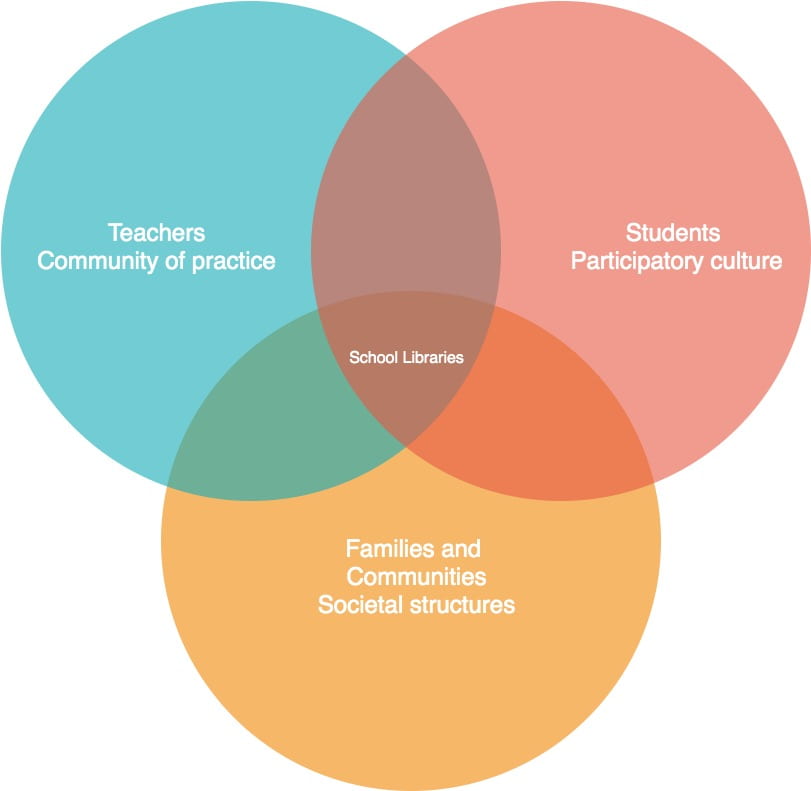
OLJ Task 2: The influence of technology on society or OLJ Task 3: Reflections on the impact of change
To be or not to be (active on social media) is no longer the question
 If we want ‘customer-driven, socially rich, and collaborative model of service and content delivery’ (module 2) then we must stop asking ‘why’ or ‘when’ and start asking ‘how.’
If we want ‘customer-driven, socially rich, and collaborative model of service and content delivery’ (module 2) then we must stop asking ‘why’ or ‘when’ and start asking ‘how.’
Why do we expect teachers to have a work culture aiming for a ‘community of practice’ (which I’ve discussed at length in previous blog posts, but also mentioned by Nisar, Prabhakar, G & Strakova, 2019), however, conversely, we expect students work almost entirely independently? Today’s working society has shifted, and so too has kid culture. Just as work places are becoming communities of practice, 21st century students have a participatory culture (also discussed in previous blog posts).
Jenkins, Clinton, Purushotma, Robison & Weigel (2006, p.3) define a participatory culture as: “a culture with relatively low barriers to artistic expression and civic engagement, strong support for creating and sharing one’s creations, and some type of informal mentorship whereby what is known by the most experienced is passed along to novice. A participatory culture is also one in which members believe their contributions matter and feel some degree of social connection with one another (at least they care what other people thing about what they have created).”
According to Jenkins (et al., 2006), forms of participatory culture could include affiliations, expressions, collaborative problem-solving and circulations [“Affiliations – memberships, formal and informal, in online communities centred around various forms of media, such as Friendster, Facebook, message boards, meta-gaming , came clans or MySpace); Expressions – producing new creative forms, such as digital sampling, skinning and modding, fan video-making, fan fiction writing, zines, mash-ups); Collaborative Problem-solving – working together in teams, formal and informal, to complete tasks and develop new knowledge (such as through Wikipedia, alternative reality gamine, spoiling); or Circulations – shaping the flow of media (such as podcasting, blogging).”]
Artega (2012, p.72) writes, “social media extends the social milieu to the digital sphere where opportunities for global social participatory learning are plentiful.” Thus, to be viable in today’s globally connected society, particularly in western civilisation where a participatory culture has become the ‘norm,’ an educational facility’s social media presence is not only something that is necessary, but is something that must be done effectively.
“For library managers, questions are moving beyond how to initiate and launch social media to the more challenging problem of how to do social media well— how to better integrate social media into the life of the library, how to more fully engage the library’s staff and users in social media; how to make the library’s social media more effective in outreach and delivery of services, and how to measure the library’s presence and activities within social media in ways that truly matter. The next wave of trends in social media use are also always looming on the horizon— what will be the next big social site where users will be going next within the social media landscape, and should the library follow?” (Mon, 2014, p.51).
Some purposes for social media have been suggested by Mon (2014, p.24) as supported by the research of AlAwadhi (2019) to include: increased avenues for feedback from users, promotion and advocacy of the school &/or library, improved information access through outreach programs, deliverable educational or support hubs, improved collections and stronger or more frequent global collaborations. Notably, Kwon’s (2020) research places building trust ahead of information motivation as a reason for use of community social media platforms.
Roadblocks to consider
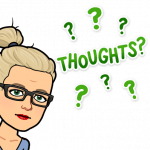 While reading Adner & Kapoor (2016) it occurred to me that, like all change processes, there will be roadblocks. This includes access to technology (either because of infrastructure, financial or intellectual constraints), as well as resistance to change from staff or families who are either change fatigued or stuck in the web1.0 mentalities. Perhaps there are issues around work-life balance, either for adults (addicted to screens and social media or overwhelmed by the need to take work home or have work cross over into the social sphere) or children (similarly addicted to screen time). These will all need to be considered in the 4 phases of creating a group digital presence or organisation’s digital learning environment (discussed at length in previous blog posts).
While reading Adner & Kapoor (2016) it occurred to me that, like all change processes, there will be roadblocks. This includes access to technology (either because of infrastructure, financial or intellectual constraints), as well as resistance to change from staff or families who are either change fatigued or stuck in the web1.0 mentalities. Perhaps there are issues around work-life balance, either for adults (addicted to screens and social media or overwhelmed by the need to take work home or have work cross over into the social sphere) or children (similarly addicted to screen time). These will all need to be considered in the 4 phases of creating a group digital presence or organisation’s digital learning environment (discussed at length in previous blog posts).
There is also the issue of needing to be innovative in the types of platforms that we promote as educators (as supported by the research of Manca (2020). Which brings up another roadblock to implementing social media for schools is the fact that there is an age limit for access – most students in K-6 Australian educational settings are below the age of 13 and cannot be encouraged by educators to look at nor participate in most social media applications. This means we have to tailor our content to an older demographic and seek out other (less public) social media platforms for younger students.
Some additional roadblocks or things to consider have been provided by Business.gov.au (2019) and they are to have a clear social media strategy, be mindful that additional staff or resources may be required for daily monitoring of all online platforms, be prepared for inappropriate behaviour (bullying, harassment, negative feedback, misleading or false claims, copyright infringement, information leaks or hacking) and have an action plan ready within your policy documents detailing specifically how to deal with these instances prior to launch date(s).
Hicks, Cavanagh & VanScoy (2020) recommend monitoring a library’s online presence via a ‘social network analysis (SNA).’ The SNA is a ‘theoretical framework and quantitatively oriented methodology’ for libraries to understand their ‘big data stories’ or connections with their community identifying relevant patterns and relationships among individuals, groups, or organisations over a specified period of time.
All of these issues need to be incorporated into the digital learning environment creation plan, a four phase process that I’ve detailed in a previous blog post from Digital Citizenship, but that can best be summarised in this infographic:
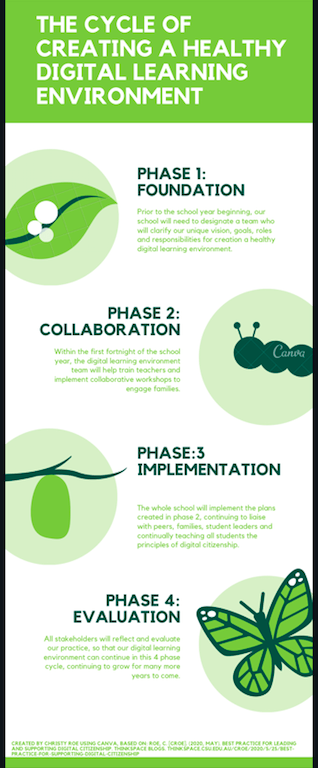
How to design a platform and design it well, improving engagement (web 2.0)
This leads to the next issue – how to have a website (web 1.0), that is interactive (web 2.0) and makes the step towards linking the online world to the offline world (web 3.0). We need to be thinking beyond web 1.0 in terms of having a simple ‘face’ website that offers little to no interaction and does not enable, encourage (nor monitor) engagement but a platform, website and social media presence that actively engages our users. The web 2.0 model of ‘likes’ is also becoming an outdated model and with web 3.0 we must begin to think of our digital presence as fully interactive, including building meaningful ongoing connections (Barnhart, 2020).
But each context must first ask “what does it mean to have ‘engaged users?” and “what platforms / website / social media should we use to engage them?”
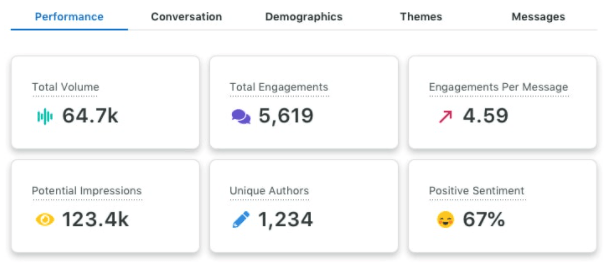
After my practical work-placement in a local public library, where I completed two weeks of ‘virtual’ research on website design (offering several recommendations for website development for the library), I realise that there are almost infinite resources, research and opinions on how to design effective websites. I don’t believe that my understanding of moving from the web presence currently (as web 1.0) to web 2.0 (more interactivity) to even web 3.0 (content creation by the users) was fully developed, until I watched the video provided in module 2 of INF506 (Schwerdtfeger, 2013). I wish I had been able to communicate this idea previously.
Yet, one key article that I did find, in the interest of brevity, was Garett, Chiu, Zhang & Young’s (2016, p.1) literature review on website design in terms of user engagement. Their 4 notable findings were:
- “Websites have become the most important connection to the public and using social media links on websites may increase user engagement;
- Proper website design is critical for user engagement, because poorly designed websites result in a higher user ‘bounce’ rate (users do not proceed past the home page) whereas, well designed websites encourage user exploration and revisit rates;
- The International Standardised Organisation (ISO) (in Garett, et al., 2016, p.1) defines website ‘usability’ as: “the extent to which users can achieve desired tasks (e.g., access desired information or place a purchase) with effectiveness (completeness and accuracy of the task), efficiency (time spent on the task), and satisfaction (user experience) within a system”;
- Out of the 20 identified design elements that impact user engagement, 7 key design elements (in order of importance) are navigation, graphical representation, organisation, content utility, purpose, simplicity and readability.” Garett et al. expand these design element definitions, but the key words are:
-
- Effective navigation: consistent menu/navigation bars, search features, multiple pathways and limited clicks/backtracking.
- Engaging graphical presentation: images, size and resolution, multimedia, font, font colour and size, logos, visual layout, colour schemes, and effective use of white space.
- Optimal organisation: logical, understandable, and hierarchical / architectural structure, arrangement / categorisation, and meaningful labels/headings/titles/keywords.
- Content utility: information is sufficient, of ongoing quality and relevant
- Clear purpose: 1) establishes a unique and visible brand/identity, 2) addresses visitors’ intended purpose and expectations for visiting the site, and 3) provides information about the organisation and/or services.
- Simplicity: clear subject headings, transparency, optimised size, uncluttered, consistent, easy, minimally redundant and understandable.
- Readability: easy, well-written, grammatically correct, understandable, brief, and appropriate.
References
Adner, R., & Kapoor, R. (2016). Right tech, wrong time. Harvard Business Review, 94(11), 60-67.
AlAwadhi, S. (2019). Marketing academic library information services using social media. Library Management, 40(3/4), 228-239. doi:10.1108/LM-12-2017-0132
Arteaga, S. (2012). Self-Directed and transforming outlier classroom teachers as global connectors in experiential learning. (Ph.D.), Walden University. http://search.proquest.com.ezproxy.csu.edu.au/docview/1267825419/BD063751849440E5PQ/1?accountid=10344
Barnhart, B. (2020, January 5). The most important social media trends to know for 2020. [Blog post]. https://sproutsocial.com/insights/social-media-trends/
Business.gov.au (2019). Social media for business. https://www.business.gov.au/Marketing/Online-presence/Social-media-for-business
Garett, R., Chiu, J., Zhang, L., & Young, S. D. (2016). A literature review: website design and user engagement. Online journal of communication and media technologies, 6(3), 1.
Hicks, D., Cavanagh, M. F., & VanScoy, A. (2020). Social network analysis: A methodological approach for understanding public libraries and their communities. Library & Information Science Research, 42(3), 101029. doi: https://doi.org/https://doi.org/10.1016/j.lisr.2020.101029
Jenkins, H., Clinton, K., Purushotma, R., Robison, A. J., & Weigel, M. (2006). Confronting the challenges of participatory culture. https://www.macfound.org/media/article_pdfs/JENKINS_WHITE_PAPER.PDF
Kwon, K. H., Shao, C., & Nah, S. (2020). Localized social media and civic life: Motivations, trust, and civic participation in local community contexts. Journal of Information Technology & Politics, 1-15.
Manca, S. (2020). Snapping, pinning, liking or texting: Investigating social media in higher education beyond Facebook. The Internet and Higher Education, 44, 100707. doi: https://doi.org/https://doi.org/10.1016/j.iheduc.2019.100707
Mon, L. (2014). Social Media and Library Services. Morgan & Claypool Publishers. ProQuest Ebook Central, http://ebookcentral.proquest.com/lib/csuau/detail.action?docID=2010483.
Nisar, T. M., Prabhakar, G., & Strakova, L. (2019). Social media information benefits, knowledge management and smart organizations. Journal of Business Research, 94, 264-272. doi: https://doi.org/10.1016/j.jbusres.2018.05.005
Schwerdtfeger, P. [Patrick Schwerdtfeger] (2013). What is web 2.0? What is social media? What comes next? https://www.youtube.com/watch?v=iStkxcK6_vY
Van Dijck, J. (2018). Introduction. In J. Van Dijck (Ed.), The Platform Society. Retrieved from Oxford Scolarship Online.
Introduction to Social Media – Reflection on INF506 Module 1

OLJ task 1: Social Media and Society – Journal Article Analysis
Self Esteem and Social Media, a Reflection:
I’ve selected the article by Lavrence & Cambre (2020) because it (and a few other of the articles provided) brings up another issue (in addition to those I mentioned in my previous post – not part of this assessment) with social media use: self esteem. The world of online interaction is a reflection of our 3 dimensional ‘real’ world, but it isn’t itself particularly ‘real.’ There has been a lot of research behind the use of magazines and their impact on the self esteems of various people. Men, young men, women, and just people in general. It makes sense therefore for the content to remain influential, despite the mode of delivery changing from printed magazines to electronic forms and social media.
Just as history has been written by the winners and images have been photoshopped and filtered, so too should we expect social media to be rife with filters and propaganda style imagery. To pretend that social media is responsible for the concepts of “raced, gendered, classed, aged, abled” information belies the historical examples of these issues in our society. The only thing that has changed is the mode of delivery and as educators we must help our students be aware of these issues so that they can identify them and discredit or stand up to them where necessary.
I particularly liked the phrase: “(we must) recast validation for appearance as a primary source of female empowerment through ideologies of online visibility” (Lavrence & Cambre, 2020, p.3). In terms of editing ‘selfies,’ I personally find them empowering. I occasionally play with the filters and then take a ‘real’ (unfiltered) photo in order to ground myself. I can generally tell when I need to get more sleep or apply creams to my skin or frizz gel to my hair from these experiences but don’t particularly notice my esteem changing. Nor do I notice my esteem changing when I see digitally enhanced images on the internet. Celeste Barber is a great master at this as well on Instagram – often copying ‘fake’ videos and images with more realistic versions. We still need validation for our appearance, we still need empowerment and we need to recognise different ideologies of online visibility, and we can still do these things with ‘selfies.’
I had not heard of ‘rinsta’ and ‘finsta’ but the concepts are interesting. I like to change photos sometimes because the normal camera filter does not represent the true beauty that I felt in that moment. Sometimes it is a selfie and sometimes it is a sunset. I consider these slightly edited images real, even though I also use the #nofilter on those occasions were the original represented near perfect reality. I think it is important to help our students develop their ‘digital forensic gaze’ (Lavrence & Cambre, 2020, p.11) to help them maintain a more stable self-esteem, particularly those who identify as cis-women, but as we’ve seen in the magazine era, not limited to cis-women.
Introduction to Social Media – Reflection on INF506 Module 1
Is social media good for us, or do we perceive it to be bad based on (possibly) outdated perceptions of healthy interaction?
I’m no stranger to social media. I have accounts on all of the top platforms, although I find Twitter a more boring version of Facebook and rarely check it) and even have my own Facebook group (#teacherswhoknowme). I am, in fact, questioning the benefits given the amount of time I spend on it instead of doing other, more traditionally ‘productive’ activities.
Yet, growing up, I was addicted to reading. I thought nothing of spending entire days in bed reading a stack of books that I checked out from the library, or later in my teens, books I’d bought in used bookstores. I even had a best friend who shared my love of reading and we’d chill in her room for entire weekends reading or going to bookstores and libraries. It seems a weird thing to do now but at the time, it never occurred to us. It probably saved us from the pursuits of boredom that impact teen behaviour today. (e.g. We weren’t hanging out at the shopping mall, smoking cigarettes or creating graffiti, etc).
Furthermore, my brother and I grew up playing outside a lot, as typical in the childhoods of the 1980’s and prior, but I remember when we moved in to live with my dad that my step mother lamented that we spent too much time on the sofa watching TV. What they did not take into account was our ‘social capital’ (Lampe, 2015) had changed. We no longer felt confident to roam outside freely and we preferred to stick together in our new environment. Similarly, the social capital of today’s youth has changed.
Nothing remains static in this world, why should socialising methods? Apart from the need for our society to increase their levels of physical activity to negate the health impacts of a sedentary lifestyle, why shouldn’t we be able to socialise primarily via diverse social media platforms, spending ‘time and effort’ building friendships in this environment, particularly if ‘communication of all forms builds relationships’ (Lampe, 2015).
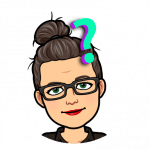 This reminds me of the readings on ‘participatory culture’ / 21st century learning skills.
This reminds me of the readings on ‘participatory culture’ / 21st century learning skills.
Another change to society is that social media allows us to have more ‘weak ties’ (Lampe, 2015) with a larger amount of people, building the amount of information to which we have access makes collaboration easier, and improves access to information for those who may have limited access in their physical environments.
Yes, I probably spend ‘too much’ time on Facebook. And I can definitely say that this is related to the stress I feel on particular days, living in a new house that needs renovating in a new town with my children increasingly occupied in their own pursuits and my husband having to commute and spending more time at work. I need the connection and I need it to be familiar. I just need to remember to have a healthy work – life balance!
 (Note: Some colleagues don’t like to use Facebook / social media for work purposes as it has the potential to cross over their work – life balance)
(Note: Some colleagues don’t like to use Facebook / social media for work purposes as it has the potential to cross over their work – life balance)
Social Media and Education
Akcaoglu & Bowman (2016, 2.1) are spot on when they say that the use of Facebook by educators creates “more interest in and perceive(d) more value in course content, (with students feeling) closer to the course and perceive(d) their instructors as more involved.” [However it is important to note that if I try to utilise Facebook in a primary school setting, it will not be for the use of my students as they are all ‘under age’ by the terms and conditions created by Facebook (and Instagram, etc) and I will therefore have to be creative in enabling global connections for my students.]
Personally, I am glad to not have to use the discussion forums anymore as the students waffle on. With Facebook, we are all used to ‘soundbites’ or snippets of information, scrolling on when we see long posts so I’m hopeful the waffling will be minimal with this course. (Save the waffling for your blog, I say!)
 I am also reminded of the readings from Digital Citizenship, where we need to use 21st Century Learning devices for 21st Century learners…
I am also reminded of the readings from Digital Citizenship, where we need to use 21st Century Learning devices for 21st Century learners…
Social media influence and misinformation
Gruzd, Wellman & Mai (2017) offer important points regarding social media, in terms of its influence and misinformation. Advertising (influence) is difficult to spot – in fact, individual people advertise on social media often just as well as corporations – and do so without cost to themselves. YouTube and Instagram have become renown for their social media ‘influencers’ (people who make a living using their personal social media platforms as advertising on behalf of larger corporations and even governments or those with political agendas). ‘Alternative facts’ or misinformation (lies – as I prefer to call them) are now as rife as hidden advertisements on TV, junk mail in the post and spam emails once were. As educators, we must help our students recognise these traits and use social media responsibly!
Link to Glossary of Social Media Terms
References
Akcaoglu, M., & Bowman, N. D. (2016). Using instructor-led Facebook groups to enhance students’ perceptions of course content. Computers in Human Behavior, 65(C), 582-590. doi: 10.1016/j.chb.2016.05.029
Gruzd, A., Jacobson, J., Wellman, B., & Mai, P. H. (2017). Social media and society: Introduction to the special issue. American Behavioral Scientist, 61(7), 647-652. doi:10.1177/0002764217717567
Lampe, C. [TEDxTalks]. (2015, April 6). Is social media good for you? TEDxUofM. [Video] https://www.youtube.com/watch?v=po01VlNvCcQ
Lavrence, C., & Cambre, C. (2020). “Do I Look Like My Selfie?”: Filters and the Digital-Forensic Gaze. Social Media + Society. https://doi.org/10.1177/2056305120955182


